Human perception of display color versus actual color
What is a Color?
Color is a subjective sensation: induced in the observer’s brain by the image created on the human retina by the light reflected by the object.

| OBJECT | LIGHTING |
The object absorbs the selected wavelengths of the spectrum emitted by light, leaving the rest being reflected
The amount reflected is determined by colorants of the dyes and pigments used in the object.
Communicating Color
Communication requires two or more people
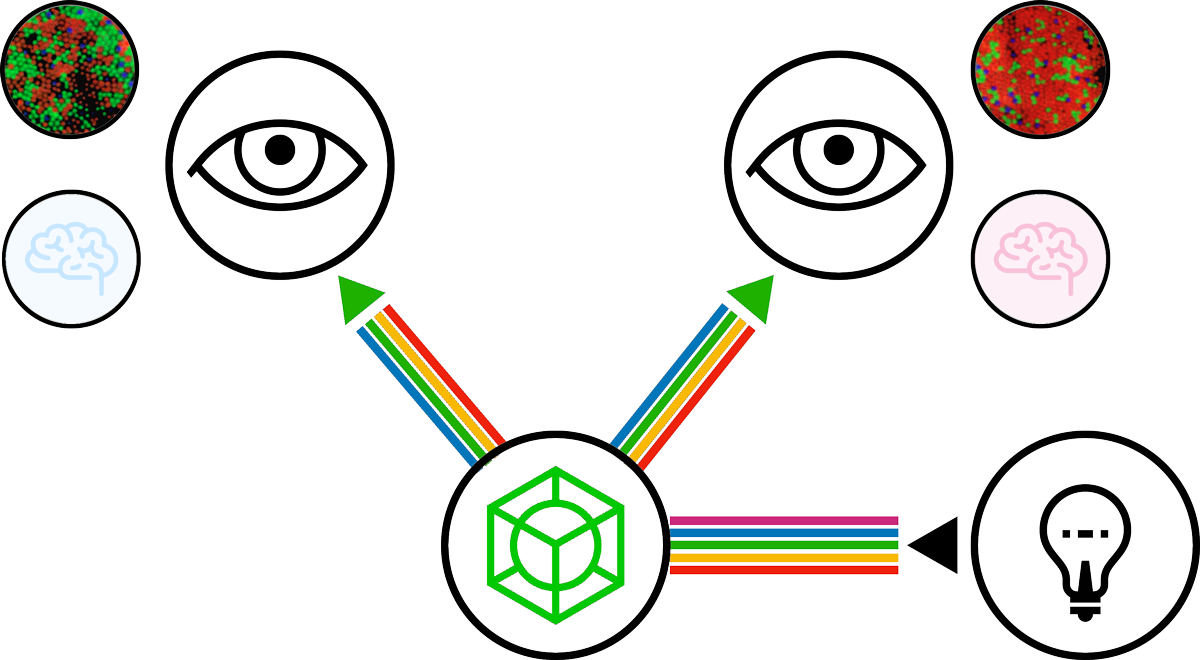
Each observer interprets the same object with different eyes, and different retinas that are spectrally different. In addition, the brain processes the images differently which compounds the result. And this is assuming that neither observer has any color deficencies, which more than 10% of the population has.
Why do people see color differently?
The problem is complex but a couple of factors are critical to understand:
1. Differences in the structure of the eye
| Color Matching Variations | Color Matching Variations | ||
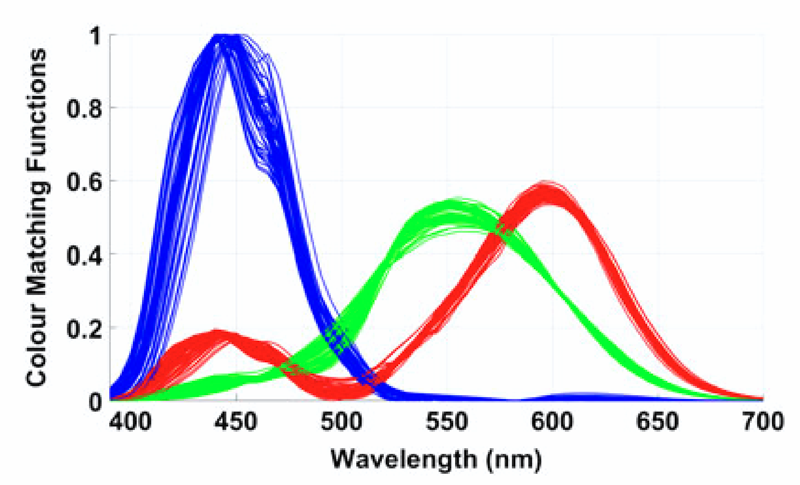 |
 |
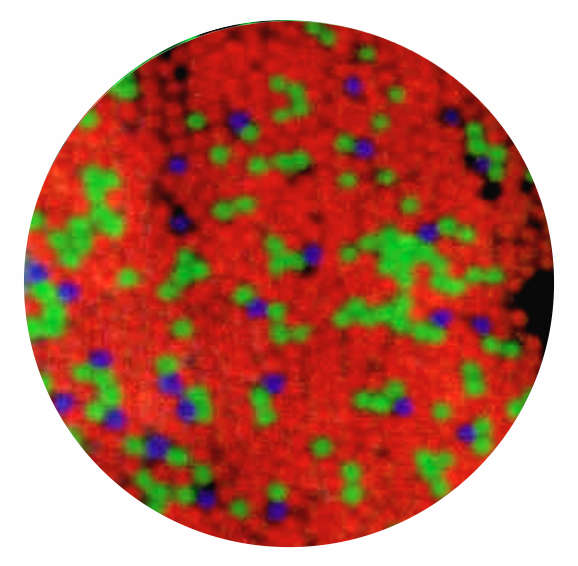 |
|
| Source An observer-metamerism sensitivity index for electronic displays DOI # 10.1002/jsid.605 | Figure 2.1.6-6. Pseudocolour image of the retina of two male subjects. The estimation of the relative amounts of cones of each type for subject A are 75.8%, 20% and 4.2% for L, M and S cones, respectively; and subject C 50.6%, 44.2% and 5.2%. Reproduced from (Roorda and Williams 1999). | ||
2. The Standard Observer Definition is averaged and not perfect. Created in 1931 (men only in the sampling)
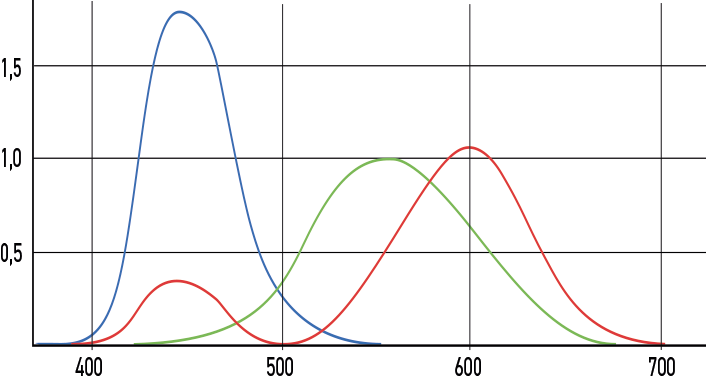
In the 1920s two color scientists, David Wright and John Guild (UK), performed a series of color matching experiments on human sight which laid the foundation for the specification of the CIE XYZ color space. Observers were asked to match monochromatic wavelengths of light with mixtures of three primary colors (red, green, and blue). Finally based on averaged data, in 1931 the CIE published the 2° Standard Observer.
Tests now repeated by laboratories around the world show how great the diversity is among the population.
Averaged data may differ significantly from individual data.
Our devices are using this non-perfect definition.
3. "Human RGB" is different from "Display RGB"
How the eye interprets RGB values is very different from how a display interprets RGB values. This is due to the differences in wavelengths and also the spectral distribution of the RGB values. When we add an instrument to measure the display, we add an additional variable called the "Instrument RGB." Instruments attempt to minimize this variable by allowing for different calibration matrices.
Here is a simple exercise that shows how big the differences can be. Take two different displays that are next to one another and adjust the gray to match one another (different ways to do this including using CC Display). Then take a picture of the two displays — a color that you perceive as almost identical in person may look dramatically different on the camera. Taking a picture with another camera will provide even different results. This shows the difference between human RGB and instrument RGB. 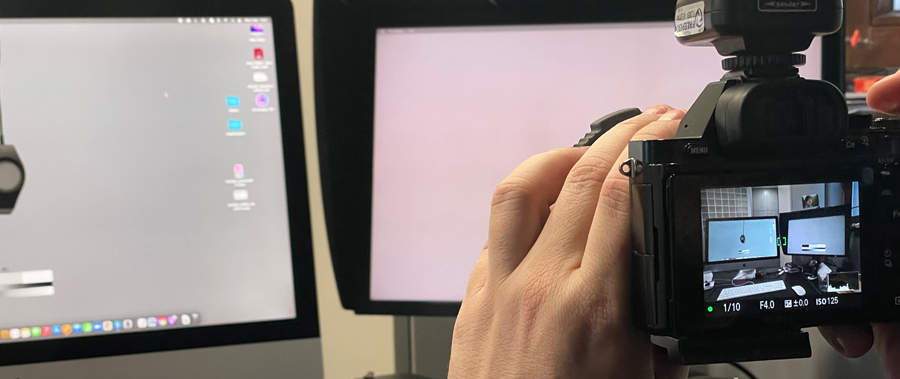
4. Spectral Power Distribution of white point of monitor doesn't match D50
When setting up a Display profile, you want the white point to match the white point of your viewing conditions, which for print work, is based on D50. Although no lighting booth renders perfect D50, many light sources can simulate within an E-Factor of 1.2 or lower to D50. But when working with light sources emitted by displays, the white SPDs are very different from the Illuminants they are simulating (D50). This causes a great deal of perceived white point differences between the display and the actual viewing condition. This results in what is called observer metamerism, in that the human RGB/white point does not match the display RGB/white point to the light booth white point. That is why the advanced version of Display Inspector provides for the ability of the user to manually edit the white point of display to more visually align with the light booth. See a later section for more details on how to control this parameter.
The Spectral Power distribution of White Point from various Displays
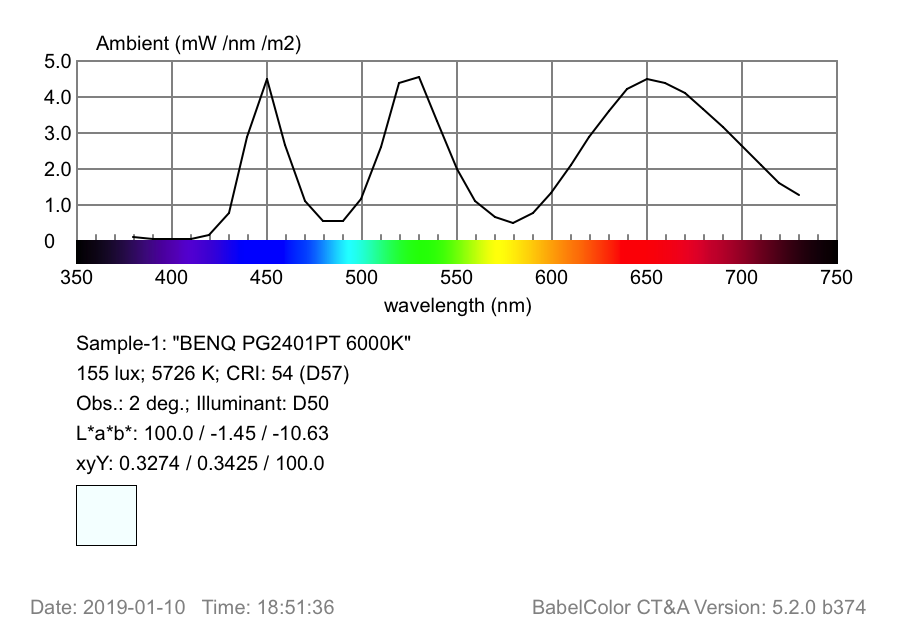 BENQ PG2401PT @ 6000K |
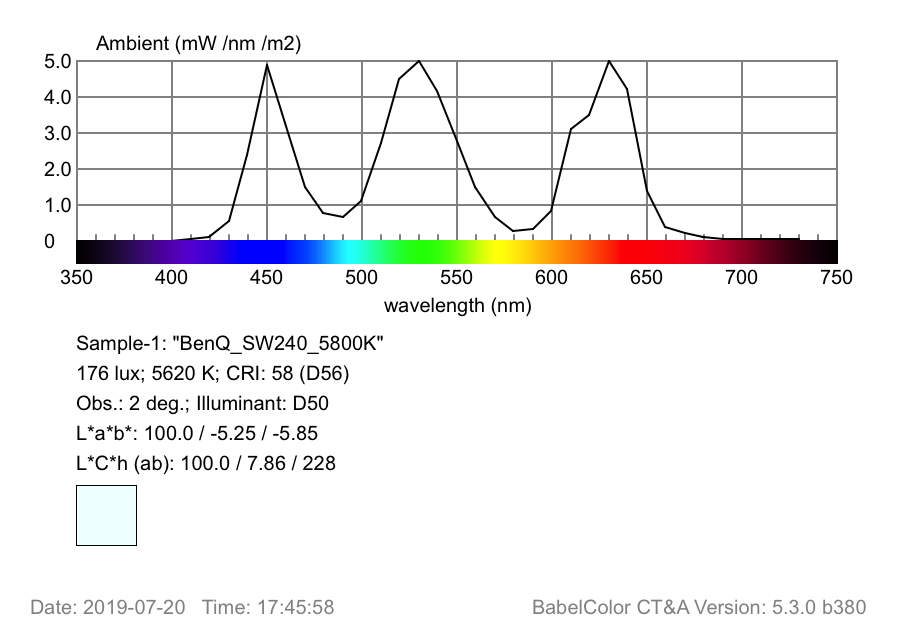 BenQ_SW240_5800K |
%20%40%205750%C2%BAK.png) EIZO CG211 (W) @ 5750ºK |
%20%40%205500%C2%BAK.png) EIZO CE210W (W) @ 5500ºK |
_en.svg.png) Plasma Display Hitachi_42PMA500 |
Contact ChromaChecker Support
Additional information and Support Form is available for logged users.